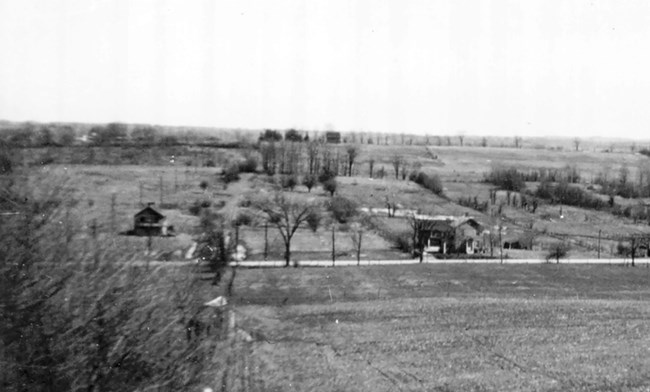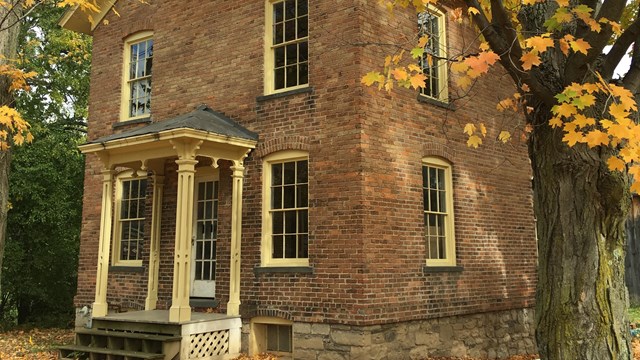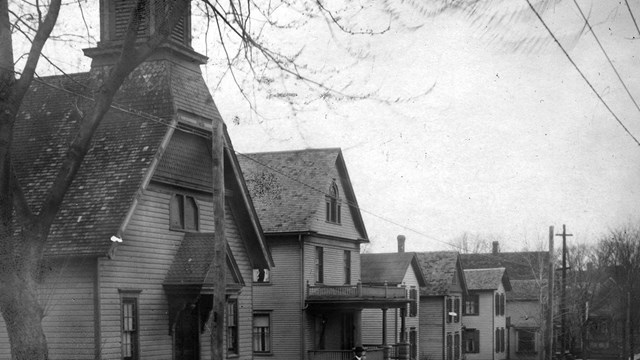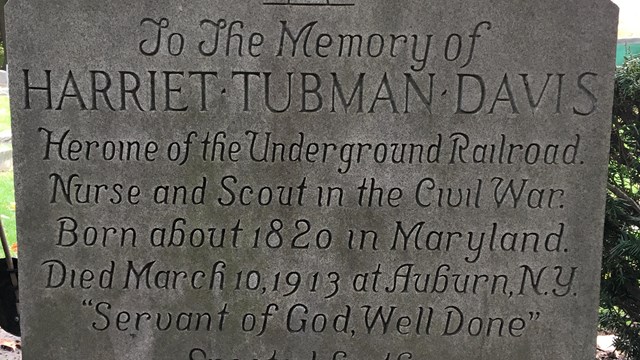
As a free woman, Harriet Tubman chose Auburn, New York for her home. Born enslaved in Dorchester County, Maryland in 1822, much of Harriet Tubman’s early life was outside of her control. Denied basic human rights and subjected to exploitation by others, Harriet seized her freedom at the age of 27. For ten years, she used her time and energy to help liberate others, but in doing so she found few opportunities to establish a home base for herself for very long. Finally, in 1859, Harriet chose this farm in Central New York as her haven, her community, and her family’s home in freedom. Why Auburn?As early as 1834, just seven years after slavery was made illegal in New York State, the Underground Railroad (UGRR) was becoming established in Auburn. Long before Harriet Tubman began her journey North, this growing enterprise was supported by a community of about 200 free Black New Yorkers and progressive members of the White population. The significant number of free Blacks in Auburn allowed freedom seekers to hide in plain sight. By 1838, an African Methodist Episcopal Zion Church, also known as the Freedom Church, was formed with members actively involved in the UGRR. These people, along with a labyrinth of roads and trails leading in and out of Auburn in every direction, and its close proximity to Canada, made the city an UGRR hub. When Harriet Tubman self-emancipated in 1849, she traversed the 125 miles to Philadelphia alone. There, Tubman met Black abolitionist William Still who served as the chairman of the Vigilance Committee of the Pennsylvania Anti-Slavery Society and was known by many as the “Father of the Underground Railroad.” It is William Still that provided Tubman the resources she needed to navigate the UGRR over the next ten years, returning to Maryland 13 times, bringing North about 70 people. Through William Still, Tubman met Lucretia Coffin Mott, a Quaker and abolitionist, who had opened her home as an UGRR station. Mott introduced Tubman to her sister, Martha Coffin Wright, who lived in Auburn, NY and also operated an UGRR station out of her home. Wright’s husband’s law partner was William Seward, then a United States Senator from New York State. At the time of their meeting, Seward was mounting a bid for the Presidency himself and would soon become Secretary of State under Abraham Lincoln. William’s wife Frances Seward ran an UGRR station out of her kitchen where many found warmth, food, and secure shelter. Frances inherited several properties upon the death of her father and, in 1859, sold Tubman a seven-acre farm with a house located on the edge of Auburn in Fleming, NY, just over one mile south of the Seward mansion. Because of their status within the community, the state, and the nation, liability under the Fugitive Slave Act of 1850 was never imposed on the Sewards. Under the law, the sale of the property to Tubman, as well as using their home as a station on the UGRR, should have garnered the Sewards a six-month jail term and a fine of $1,500, about $30,000 in today’s money – for each person they helped. But, the sale of the property to Tubman, a “fugitive slave”, was never questioned. For the Sewards to have taken such risks demonstrates the high regard in which they held Tubman. In a letter of support for her from William Seward in 1862, he states, “I have known her long, and a nobler, higher spirit, or truer, seldom dwells in the human form.” On the eve of the Civil War, Tubman moved her parents and other family members to her farm outside Auburn from Canada, where she had originally brought them to live in freedom. Many within Auburn’s Black community came from the Eastern Shore of Maryland, where Tubman was born, and shared common cultural and religious ties with her and her family. Tubman and other family members joined the African Methodist Episcopal Zion Church in Auburn with Tubman becoming a life-long congregant. It is this farm, and the relationships Tubman developed in both the Black and White communities, that grounded Tubman in Central New York for the 50 years of her life spent in freedom. 
Harriet Tubman Home
Harriet Tubman's family home on her farm was the center of her mission of compassion to care for the dispossessed in the community. 
Thompson A.M.E. Zion Church
Harriet Tubman was a woman of deep faith. The Thompson AME Zion Church was her religious community for 22 years until her death in 1913. 
Fort Hill Cemetery
This site lies outside of Harriet Tubman NHP and contains the location where Tubman is buried. It is operated by Fort Hill Cemetery. |
Last updated: March 12, 2022
